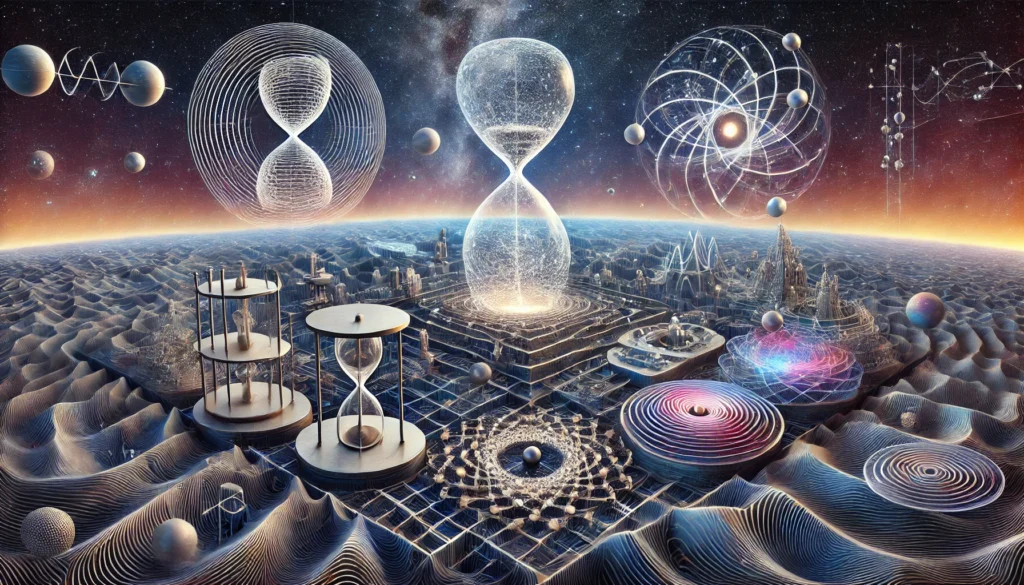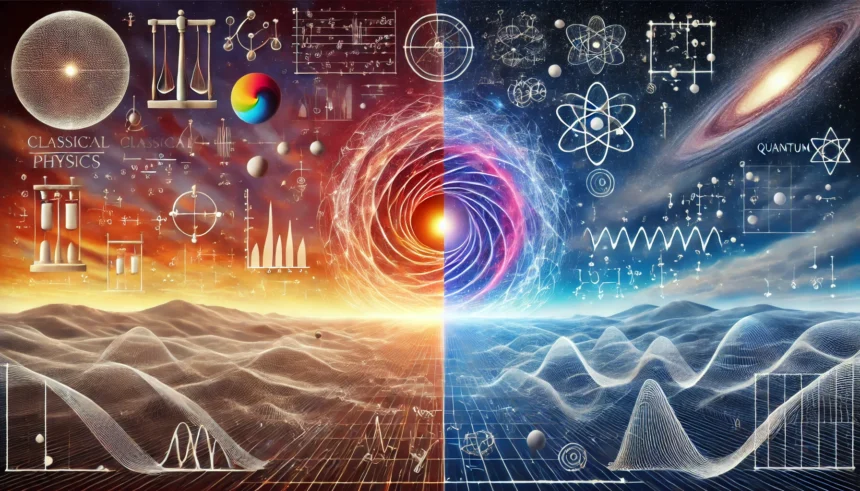introduction to classical and quantum integrable systems cite:bimsa.net
Abstract
Introduction to classical and quantum integrable systems cite:bimsa.net Integrable systems are mathematical models that describe systems with highly ordered and predictable dynamics. Foundational to both classical mechanics and quantum mechanics, they enable complete solutions in terms of conserved quantities. This article delves into their principles, significance, mathematical formulations, and applications.
1. Overview
What are Integrable Systems?
Integrable systems are characterized by their solvability. These systems possess as many conserved quantities as degrees of freedom, ensuring a high degree of regularity and predictability in their dynamics.
Why are they Important?
- Foundational to understanding fundamental physical processes.
- Offer insights into non-chaotic dynamics.
- Provide solutions to problems in fields ranging from statistical mechanics to string theory.
2. Classical Integrable Systems
2.1 Definition
A classical system is deemed integrable if it allows for a complete set of integrals of motion that are mutually Poisson-commutative.
Mathematically:{Ii,Ij}=0∀i,j\{I_i, I_j\} = 0 \quad \forall i, j{Ii,Ij}=0∀i,j
where {Ii,Ij}\{I_i, I_j\}{Ii,Ij} are Poisson brackets, and IiI_iIi are conserved quantities.
2.2 Key Characteristics
- Liouville’s Theorem: Integrable systems can be reduced to motion on a torus in phase space.
- Symplectic Structure: Governed by Hamiltonian mechanics and symplectic geometry.
- Deterministic Evolution: Predictable trajectories.
2.3 Examples
- Kepler Problem: Describes planetary motion, where the total energy and angular momentum are conserved.
- Harmonic Oscillator: A simple system with conserved energy and phase relations.
- KdV Equation: A nonlinear equation governing solitons.
2.4 Tools and Techniques
- Lax Pairs: Represent systems through pairs of matrices whose evolution encodes the dynamics.
- Action-Angle Variables: Simplify the system to decoupled oscillatory motion.
3. Quantum Integrable Systems

3.1 Definition
Quantum integrable systems extend the concept of integrability to the quantum regime, requiring that the Hamiltonian and conserved operators commute.
Formally:[H,Qi]=0∀i[H, Q_i] = 0 \quad \forall i[H,Qi]=0∀i
where HHH is the Hamiltonian and QiQ_iQi are conserved operators.
3.2 Distinguishing Features
- Discrete spectra and exact eigenstates.
- Often solved via algebraic techniques like the Bethe ansatz.
3.3 Examples
- Heisenberg Spin Chain: Models spin interactions in a lattice.
- Lieb-Liniger Model: Describes 1D bosons with delta-function interactions.
- Hubbard Model: Central to condensed matter physics, describing electron interactions.
3.4 Tools and Techniques
- Yang-Baxter Equation: Governs the scattering matrix and ensures consistency of particle interactions.
- Bethe Ansatz: Provides exact solutions to eigenvalue problems.
- Quantum Groups: Algebraic structures underpinning integrability.
4. Mathematical Structures
Classical:
- Hamiltonian Mechanics: Central framework for classical integrable systems.
- Symplectic Geometry: Mathematical setting for phase space.
Quantum:
- Operator Algebras: Represent quantum observables.
- R-Matrix Formalism: Encodes interaction rules in quantum systems.
5. Comparison of Classical and Quantum Integrability
| Feature | Classical Systems | Quantum Systems |
|---|---|---|
| Conserved Quantities | Functions in phase space | Operators in Hilbert space |
| Dynamics | Deterministic trajectories | Wavefunction evolution |
| Mathematical Tools | Symplectic geometry | Operator algebra |
| Predictability | Full solvability | Exact eigenvalues and states |
6. Applications
6.1 Classical Systems
- Celestial Mechanics: Explains planetary orbits.
- Fluid Dynamics: Soliton propagation.
6.2 Quantum Systems
- Condensed Matter Physics: Models like the Hubbard model explain electronic properties.
- Quantum Computing: Insights into qubit interactions.
6.3 Interdisciplinary Impacts
- String Theory: Role in the AdS/CFT correspondence.
- Statistical Mechanics: Describes phase transitions.
7. Modern Developments
- Advances in numerical simulations of integrable models.
- Quantum Information Theory: Applications in error correction.
- Experimental Realizations: Ultracold atoms and optical lattices mimic integrable systems.
8. Challenges and Open Questions
- Extending integrability to non-equilibrium dynamics.
- Exploring semi-integrable and chaotic systems.
- Connecting integrability to emergent phenomena in condensed matter.
Conclusion
Integrable systems, introduction to classical and quantum integrable systems cite:bimsa.net both classical and quantum, remain pivotal in physics and mathematics. Their solvability and predictability provide invaluable insights across disciplines, from theoretical physics to experimental applications. The continued study of these systems promises deeper understanding and novel technologies.
Case Study: The Korteweg–de Vries (KdV) Equation
Overview
The Korteweg–de Vries (KdV) equation is a cornerstone of classical integrable systems. It describes the propagation of shallow water waves and is remarkable for its soliton solutions—waves that maintain their shape over long distances.
Equation
∂u∂t+6u∂u∂x+∂3u∂x3=0\frac{\partial u}{\partial t} + 6u \frac{\partial u}{\partial x} + \frac{\partial^3 u}{\partial x^3} = 0∂t∂u+6u∂x∂u+∂x3∂3u=0
where u(x,t)u(x,t)u(x,t) represents the wave profile.
Key Properties
- Integrability:
- The KdV equation has an infinite number of conserved quantities, making it integrable.
- Solutions can be expressed in terms of Lax pairs, which are differential operators satisfying a specific evolution equation.
- Soliton Solutions:
- Solitons arise as a result of the balance between nonlinearity (6u∂u∂x6u \frac{\partial u}{\partial x}6u∂x∂u) and dispersion (∂3u∂x3\frac{\partial^3 u}{\partial x^3}∂x3∂3u).
- These are localized waves that interact elastically, preserving their shape and speed after collisions.
- Applications:
- Describes physical phenomena like shallow water waves, plasma physics, and even traffic flow.
Quantum Analogue

The quantum analogue of the KdV equation involves quantization of the underlying algebra. The conserved quantities are replaced by quantum operators, and the dynamics involve quantum commutation relations.
FAQ on Classical and Quantum Integrable Systems
1. What distinguishes integrable systems from chaotic systems?
- Integrable Systems: Characterized by predictability and regularity due to the presence of conserved quantities. Their phase space trajectories lie on tori.
- Chaotic Systems: Lack sufficient conserved quantities, resulting in sensitive dependence on initial conditions and irregular trajectories.
2. What are some famous classical integrable systems?
- Kepler Problem: Describes planetary motion.
- KdV Equation: Models shallow water waves.
- Euler’s Equations: Describe rigid body rotation.
3. How are quantum integrable systems solved?
Quantum integrable systems are solved using specialized techniques like:
- Bethe Ansatz: Constructs eigenstates and eigenvalues.
- Yang-Baxter Equation: Ensures the consistency of scattering processes.
- Quantum Groups: Provide algebraic structures for operator relations.
4. Are integrable systems realistic models of nature?
- Many natural systems exhibit integrable behavior under idealized conditions. For example, solitons in fiber optics and shallow water waves.
- Real-world systems often deviate from perfect integrability, but integrable approximations provide crucial insights.
5. What is the role of integrable systems in modern physics?
- Condensed Matter: Models like the Hubbard and Heisenberg chains explain magnetic and electronic properties.
- Quantum Computing: Insights into many-body dynamics.
- String Theory: Integral to the AdS/CFT correspondence.
6. Can integrable systems exhibit chaos?
In their pure form, integrable systems do not exhibit chaos. However, perturbations or deviations from integrability can lead to chaotic dynamics.
7. How are solitons relevant to technology?
Solitons have applications in:
- Fiber Optics: For transmitting data over long distances without distortion.
- Bose-Einstein Condensates: Observed as matter wave solitons.
- Plasma Physics: Explains nonlinear wave propagation.
8. What tools are used to study integrable systems?
Key tools include:
- Lax Pairs: For classical integrability.
- Yang-Baxter Equation: For quantum integrability.
- Numerical Simulations: For approximating dynamics in near-integrable systems.
9. What are some challenges in studying integrable systems?
- Extending integrability to higher dimensions and non-equilibrium scenarios.
- Studying semi-integrable and perturbed systems.
- Developing experimental realizations in quantum systems.
Conclusion
Integrable systems, both classical and quantum, remain a vital area of research, with applications spanning theoretical and applied sciences. Their study has led to breakthroughs in mathematics, physics, and even technology. Understanding their principles can offer insights into a wide array of natural and engineered systems.







Post Comment